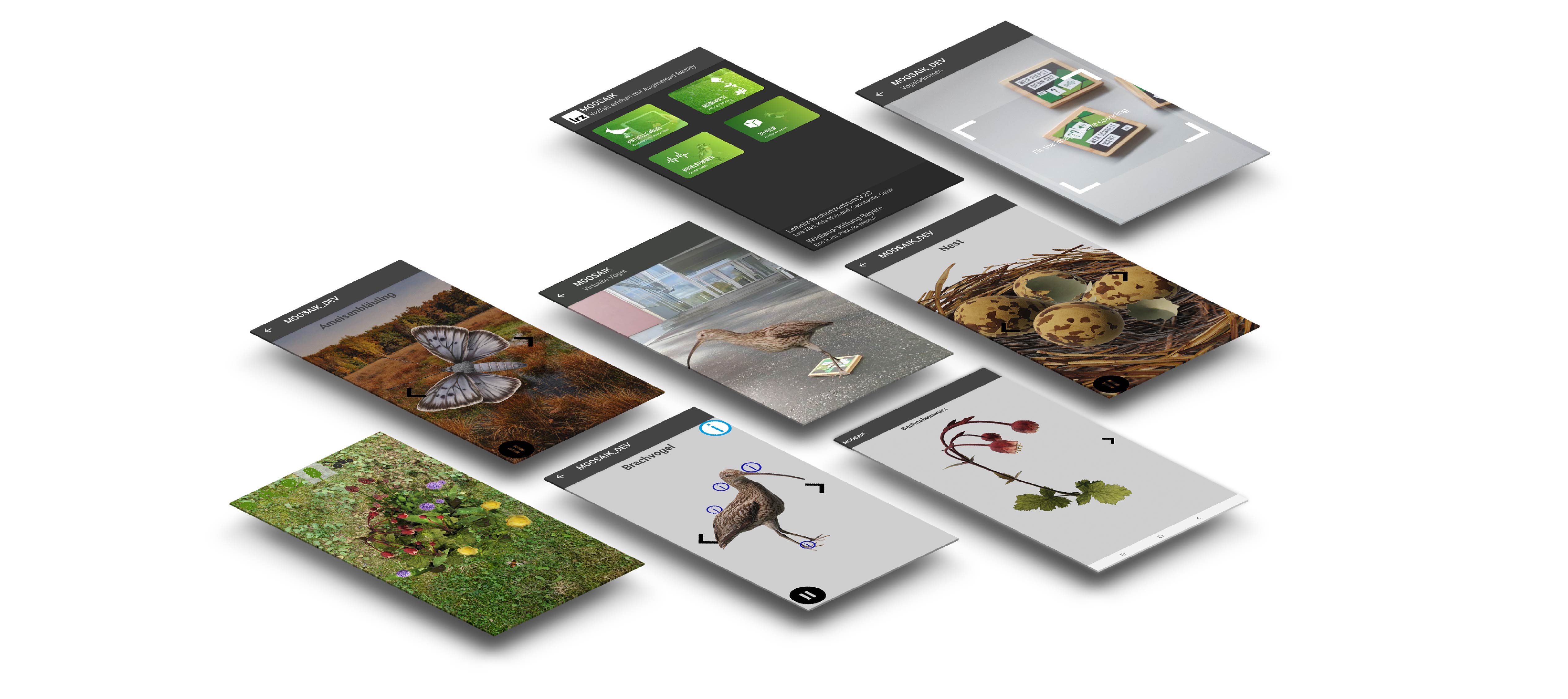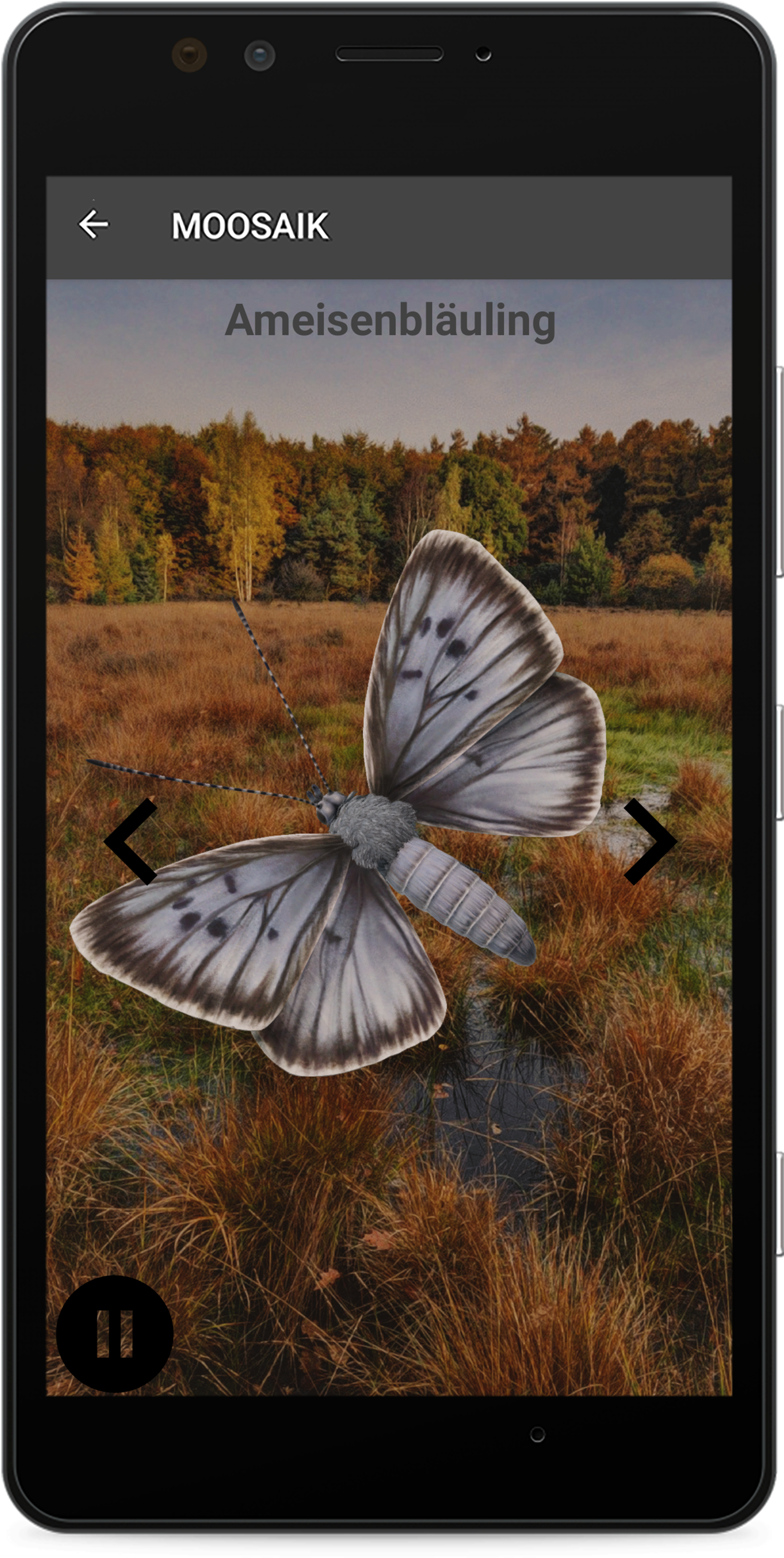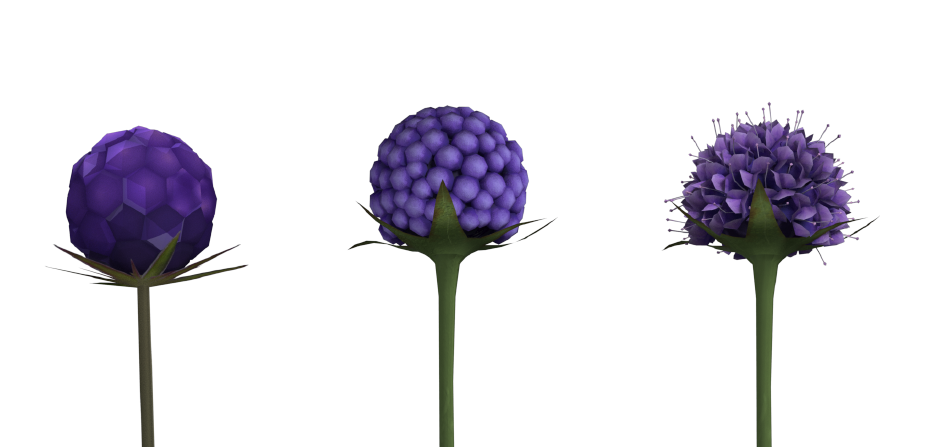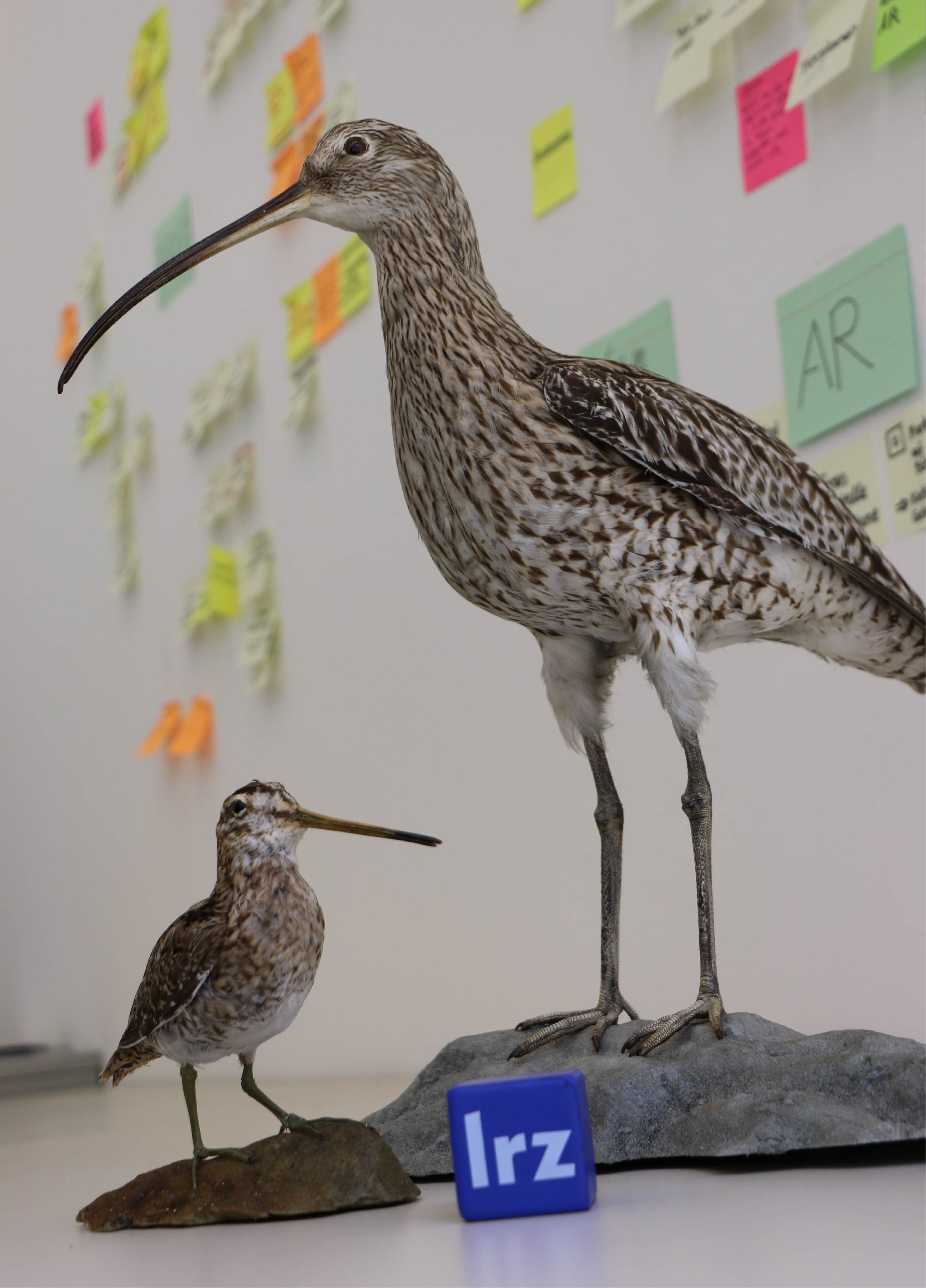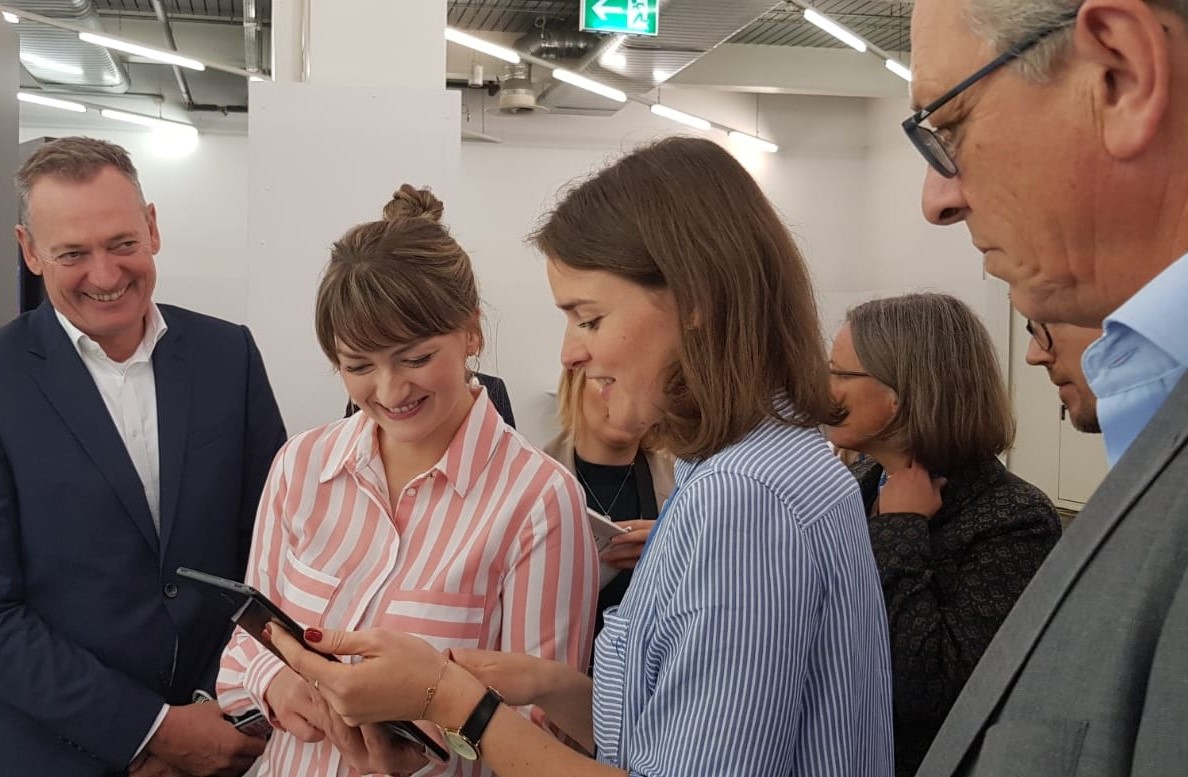Artenschutz
Endangered species in Bavaria
(Accordign scientific paper)
Species protection is difficult to implement without the support of the population. In many cases, it can only be implemented effectively if people adapt their habits and subordinate their actions to the welfare of biodiversity. The effort required to achieve this change of heart depends not only on the extent of the restrictions but also strongly on the species to be protected: Species that are perceived as less aesthetic or less useful are met with less interest. The same applies to shy or very small species that are hardly noticed by society and whose extinction is therefore perceived as less fatal.
MOOSAIK - Species protection with Augmented Reality
To be able to protect these animals effectively, it is of great importance to use the appropriate means of communication. They determine the way in which people fight for attention, how connections are pointed out, dangers are pointed out and facts are explained. Augmented Reality (AR) offers great potential to support these tasks.
With the friendly support of the Wildland Foundation Bavaria.
AR App MOOSAIK
Die Projektentwicklung am Leibniz-Rechenzentrum, V2C
The "MOOSAIK" project tested the possibilities of new technologies (in particular AR) for environmental communication. Why is environmental communication such an important topic?
Every day, an infinite amount of information is pouring in on us. Some contents are sometimes a little bit too short. For example, how species protection in Bavaria should continue and the colourful biotopes that are essential for the survival of so many animal and plant species. This is where environmental communication comes in: First of all, it must fight for people's attention, make itself heard, and then point out connections, explain facts and point out dangers. It thus takes a first important step towards achieving change.
Why did you choose an application with augmented reality for these purposes?
The way in which content is conveyed is decisive for whether people listen, understand the content, pass it on and ultimately act in the interests of environmental protection. In order to be able to choose the best way of communication in the future, it is important to test the possibilities offered by new technologies. Augmented Reality is no longer so new, but it has only arrived in public perception in recent years. This is mainly due to the fact that the development of mobile devices now makes it possible to experience AR fluidly even with standard devices.
Our approach was that AR offers many opportunities for environmental communication, as the technology enables content to be anchored directly in nature. The user is not tied to the screen of the smartphone all the time and stands on the spot to read or watch videos. With AR, the user can be motivated (currently via a mobile device) to explore the nature around them and discover lifelike 3D models.
In the MOOSAIK App you can discover not only meadow breeders but also various flowers and insects. How did you choose these very specific species?
The large curlew, the lapwing and the snipe are among the bird species that also occurred in large numbers in Bavaria in the past, but are now endangered. Mainly due to the loss of their habitats, their populations have declined dramatically over the last 30 years. Thus they are among the animal species which for a long time were hardly imaginable without them in Bavarian nature, but which have now been forgotten by the population. Special efforts are needed to achieve acceptance of the protective measures for animals that are alien to humans. That is why we have decided not to focus on elephants, polar bears or pandas, but on less known native species. The AR App thus represents a first contact between humans and animals.
As a representative of endangered species, which are very small, we chose the Ant Blue. The AR app also serves as a magnifying glass, allowing the butterfly to be observed from close up. For the plants we concentrated on bog plants from Germany.
What were the particular challenges in the design of the project?
The goal of using the AR app to raise awareness of rare, shy, small species posed many questions: How should animals be represented in AR? How should they appear and look like? Is a realistic appearance more goal-oriented than an abstract one? Does the phenomenon of Uncanny Valley also occur in virtual animals? Are animations important for perception? And does our target group even want to view the species in AR? How can we direct the users' attention to nature via the app without distracting too much from it?
At the beginning of the project we were mainly concerned with the presentation of 3D models of the animal and plant species. Abstracted 3D models with comic charm were compared with very realistic versions and different animations were tested. To ensure that the AR application can be experienced on less powerful devices, minimizing memory consumption was always on the agenda.
The development and animation of 3D models of animal and plant species has played an important role in the project implementation. What difficulties did this task present you with?
After some user surveys we could be sure that a most lifelike representation of the 3D models would be useful for this project. However, it should of course be possible to run the app on a common smartphone. One of the biggest challenges was therefore to estimate how many details the technical conditions would allow.
Especially the plants sometimes have many small details: the devil's bite, for example, has dozens of small flowers on one plant. Here there was hardly any other option than to use as much geometry. So we worked iteratively and moved from very rough models to more detailed and realistic models.
When creating the animals it was important for us to test different techniques. At the beginning of the project we experimented with the representation of the lapwing and modeled it completely by ourselves. However, the effort to model and texture the 3D models completely from scratch was very high. So we looked for ways to speed up this process.
In addition to special sculpting software, we also experimented with photogrammetry, which proved to be the ideal solution. Many rare animal and insect species can be found in natural collections as specimens and can be digitized with relatively little effort. The Wildland Foundation Bavaria provided us with a specimen of the large curlew, which we digitized with the help of photogrammetry software. This quickly gave us a very accurate 3D model, which we could then prepare and animate for use.
Screenrecordings
Recordings of MOOSAIK AR App






